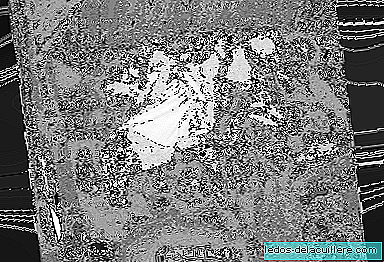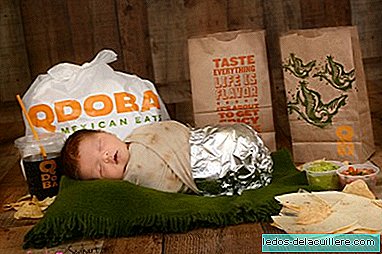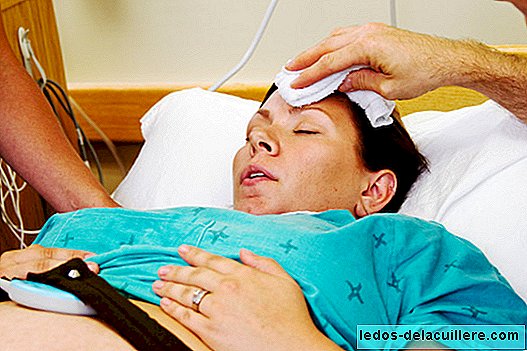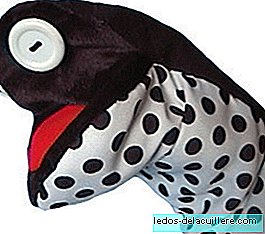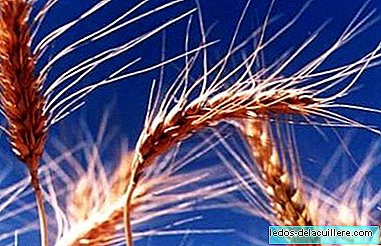
Today we begin to see the role of cereals with gluten in infant feeding, starting with the wheat. Gluten is a protein that contains cerals such as wheat, rye, oats and barley, which is capable of causing intolerance and allergy problems.
Its introduction should be indicated by the pediatrician, but in general it is advised not to give them to babies until seven, eight or nine months, as indicated by the Nutrition Committee and the Lactation Committee of the Spanish Association of Pediatrics.
However, in some cases the possible advisability of giving it at six months, according to the new perspectives, but doing so in minimal quantities and in a very slow way, always supplemented with breast milk, because its protective effect of the intestinal mucosa will reduce, the incidence of intolerance problems is expected. This advice tries, above all, to combine breastfeeding and gluten, thinking that the baby can be weaned after six months. My advice is to be very cautious and follow the doctor's recommendation in each case.
Let's talk now about wheat more details.
The wheat
Although there has been controversy the most accepted thesis indicates that the wheat It began to be consumed 10,000 years ago, using hunter-gatherers of wild species from which current species descend.
It is estimated that 8000 years ago a larger variety of grain originated and could only spread its seeds by the hand of man, since they were too large to be carried by the wind. This new wheat was a food revolution in Mesopotamia.
There are data that attest to its cultivation around 6000 BC, and Romans and Egyptians cultivated it as the basis of the wealth of their empires. Today it is cultivated in practically all the countries where it can be done and it is the crop to which a greater proportion of arable land is dedicated.
Wheat Properties
The wheat It is a food rich in carbohydrates and that, consumed in an integral way, provides a good amount of fiber. It also contains vitamins of group B and vitamin E.
Regarding minerals, they have selenium, and lower amounts of iron, magnesium, calcium, manganese and copper, these nutrients being always higher in the whole varieties.
Consumption
The most common form of consumption of wheat It is in flour, ground the seeds, and used to make bread with or without yeast, cookies and cakes, as well as as a thickener for sauces and food coatings in fried foods.
Babies, from the recommended age, we can offer it in bread, industrial or homemade porridge, in addition to semolina, always being careful when choosing so that it does not contain traces of egg or other foods still contraindicated. Pasta like noodles can carry eggs, so you have to monitor its composition and, if in doubt, delay it up to 12 months.
My advice is to get a bakery and experiment with it. We can prepare delicious breads with white or whole wheat flour, and add flavors such as onion, garlic, tomato, spices and nuts. For me it has been a great culinary discovery and since I have it I have never bought bread again.
There are some dishes that use the grain of wheat Directly cooked and they are also nutritious and rich, in the form of stew.
Other presentations are bulgur and seitan, derived from wheat, which offer special richness in protein and micronutrients.
Buckwheat

I will include it in this section in spite of not being a cereal of the wheat family, but that, because of the success it is having in its inclusion in the current kitchen, it is worth knowing a little more.
That of buckwheat or buckwheat is not really a cereal, although it has very similar properties. The most remarkable thing is that it does not contain gluten.
It is very rich in proteins, up to 13%, and in addition to hydrates it contains oleic, linoleic, palmitic and linolenic acid, in addition to vitamins B1, B10, B2, B3, B6 and E, in addition to minerals such as potassium, magnesium, calcium , iron, fluorine and phosphorus.
It is in the form of flour or whole grain. Delicious crepes and cakes are made with the flour. The grain, previously soaked and roasted, is cooked and can be used as a stew base or added to salads.
Conclusion
The wheat It is the most consumed cereal today and its properties are of great benefit to children, both for its richness in hydrates and for the fiber, proteins, minerals and vitamins it provides, being able to use it in many delicious preparations.


